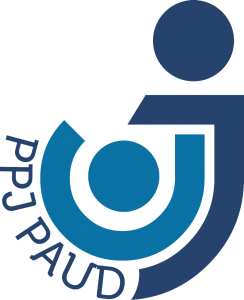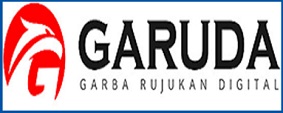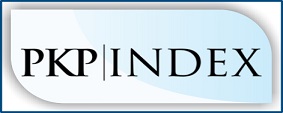Exploration of critical literacy skills in teaching environmental issues to early childhood in the coastal region
DOI:
https://doi.org/10.26555/jecce.v7i1.9301Keywords:
critical literacy, early childhood education, picture bookAbstract
With the amount of abundant information in an online environment, critical literacy is needed to encounter misinformation and disinformation. Critical literacy can be taught from the early age to strength the ability to understand information and to think the meaning of information, stories, events, pictures and others. The research aim was to explore the critical literacy activities in early childhood education using a picture book and contextual setting with the theme of environment activities. The research used a qualitative approach using thematic analysis. Themes were gathered through observations and conversations with children. All information and patterns were coded and interpreted to create themes. The sample used purposive sampling, from 13 children aged 5 to 6-year-old in the coastal region of the Tomini Gulf during their literacy activities. The results showed that children had an awareness to connect the issue from the topic to their daily lives. These activities give children the chance to voice their opinion and solution even though the exploration to this activity has not been fully maximized. Lastly, children engaged in the literacy activity through identifying and creating meaning from the pictures and other clues of the book. Therefore, implementing critical literacy should integrate familiar settings and picture books that in line to children’s literacy.
References
Barnes, E. M., Dickinson, D. K., & Grifenhagen, J. F. (2017). The role of teachers’ comments during book reading in children’s vocabulary growth. Journal of Educational Research, 110(5), 515–527. https://doi.org/10.1080/00220671.2015.1134422
Bjerknes, A. L., Wilhelmsen, T., & Foyn-Bruun, E. (2024). A Systematic Review of Curiosity and Wonder in Natural Science and Early Childhood Education Research. Journal of Research in Childhood Education. https://doi.org/10.1080/02568543.2023.2192249
Bringing Together What We Know about Literacy and Equity : A Discussion about What ’ s Important . (2020).
Brosseuk, D., Exley, B., & Neumann, M. (2020). “You Know, I Could Trip and Fall Onto the Track!”: Inspiring Text Production. Reading Teacher. https://doi.org/10.1002/trtr.1865
Churchward, P., & Willis, J. (2019). The pursuit of teacher quality: identifying some of the multiple discourses of quality that impact the work of teacher educators. Asia-Pacific Journal of Teacher Education. https://doi.org/10.1080/1359866X.2018.1555792
Creswell. (2014). Educational Research: Planning, Conducting, and Evaluating Quantitative and Qualitative Research (5th ed.). NSW: Pearson Australia.
Derby, M., Macfarlane, A., & Gillon, G. (2022). Early literacy and child wellbeing: Exploring the efficacy of a home-based literacy intervention on children’s foundational literacy skills. Journal of Early Childhood Literacy, 22(2), 254–278. https://doi.org/10.1177/1468798420955222
Freebody, P. R. (2003). Qualitative Research in Education. SAGE Publications Ltd.
Gleim, L., Iorio, J. M., Hamm, C., & Sadler, K. (2022). Children as capable: daily plans in a preschool community. Contemporary Issues in Early Childhood. https://doi.org/10.1177/1463949120966089
Hasanah, S. N., Sunarno, W., & Prayitno, B. A. (2021). Improving Students’ Critical Thinking Skills Trough Contextual Teaching and Learning Science Module. JIPF (Jurnal Ilmu Pendidikan Fisika). https://doi.org/10.26737/jipf.v6i2.1828
Holyoke, E., & Ries, E. (2023). “I Didn’t Think About That Perspective”: Preservice Teachers’ (Dis)comfort in Applying Critical Literacy and Race-Visible Discourse. Literacy Research and Instruction, 00(00), 1–21. https://doi.org/10.1080/19388071.2023.2208184
Honan, E., Exley, B., Kervin, L., Simpson, A., & Wells, M. (2013). Rethinking the literacy capabilities of pre-service primary teachers in testing times. Australian Journal of Teacher Education. https://doi.org/10.14221/ajte.2013v38n10.3
Irawati Dini, Iqbal Aji Muhamad, Hasanah Aan, & Arifin Bambang Samsul. (2022). Profil Pelajar Pancasila Sebagai Upaya Mewujudkan Karakter Bangsa. Edumaspul Jurnal Pendidikan.
Juliani, A. J., & Bastian, A. (2021). PENDIDIKAN KARAKTER SEBAGAI UPAYA WUJUDKAN PELAJAR PANCASILA | Juliani | PROSIDING SEMINAR NASIONAL PROGRAM PASCASARJANA UNIVERSITAS PGRI PALEMBANG. Prosiding Seminar Nasional ….
Kim, S. J. (2019). Children as Creative Authors: The Possibilities of Counter-Storytelling with Preschool Children. Kappa Delta Pi Rec, 55(2), 72–79.
Kim, So Jung, & Yang, S. J. (2021). Enriching Critical Literacy Through Children’s Literature: A Case Study in South Korea. Publishing Research Quarterly, 37(1), 69–89. https://doi.org/10.1007/s12109-021-09790-0
La Croix, L., Ward Parsons, A., Klee, H. L., Vaughn, M., & Yun, S. (2023). A Snapshot of Early Childhood Teachers’ Read-Aloud Selections. Early Childhood Education Journal, June. https://doi.org/10.1007/s10643-023-01534-3
Law, H.-Y. (2020). Critical literacy in early childhood education: Questions that prompt critical conversations. He Kupu.
Luke, A. (2012). Critical Literacy: Foundational Notes. Theory into Practice. https://doi.org/10.1080/00405841.2012.636324
Misirli, O., & Ergulec, F. (2021). Emergency remote teaching during the COVID-19 pandemic: Parents experiences and perspectives. Education and Information Technologies, 0123456789. https://doi.org/10.1007/s10639-021-10520-4
Mufdillah. (2009). Soft skills surfacing in collaborative reading practices at home and early childhood centre. Asuhan Kebidanan Ibu Hamil.
O’Halloran, Tan and E. (2013). 1–38.
OECD. (2018). PISA 2018 reading literacy framework. PISA 2018 Assessment and Analytical Framework.
Rodriguez Leon, L. (2023). Meaning, relationships, identities: An exploration of motive and intent in early childhood literacies. Journal of Early Childhood Research, 1995. https://doi.org/10.1177/1476718X231188468
Sari, D. A. K., & Setiawan, E. P. (2023). Literas Baca Siswa Indonesia Menurut Jenis Kelamin, Growth Mindset, dan Jenjang Pendidikan: Survei PISA. Jurnal Pendidikan Dan Kebudayaan, 8(1), 1–16. https://doi.org/10.24832/jpnk.v8i1.3873
Trott, C. D., & Weinberg, A. E. (2020). Science Education for Sustainability: Strengthening Children’s Science Engagement through Climate Change Learning and Action. Sustainability, 12(16), 6400. https://doi.org/10.3390/su12166400
UNESCO. (2017). Literacy Rates Continue to Rise from One Generation to the Next. Unesco, 2016(45), 5.
Willis, L. D., & Exley, B. (2018). Using an online social media space to engage parents in student learning in the early-years: Enablers and impediments. Digital Education Review. https://doi.org/10.1344/der.2018.33.87-104
Yang, Q., Zimmermann, K., Bartholomew, C. P., Purtell, K. M., & Ansari, A. (2023). Preschool Classroom Age Composition and Physical Literacy Environment: Influence on Children’s Emergent Literacy Outcomes. Early Education and Development, 00(00), 1–18. https://doi.org/10.1080/10409289.2023.2247953
Yoon, H. S. (2020). Critically Literate Citizenship: Moments and Movements in Second Grade. Journal of Literacy Research, 52(3), 293–315. https://doi.org/10.1177/1086296X20939557
Downloads
Published
How to Cite
Issue
Section
License
Copyright (c) 2024 Waode Eti Hardiyanti, Rifda Mardian Arif, Sulkifly

This work is licensed under a Creative Commons Attribution-ShareAlike 4.0 International License.
Authors who publish with this journal agree to the following terms:
- Authors retain copyright and grant the journal right of first publication with the work simultaneously licensed under a Creative Commons Attribution-ShareAlike 4.0 International License that allows others to share the work with an acknowledgement of the works authorship and initial publication in this journal.
- Authors are able to enter into separate, additional contractual arrangements for the non-exclusive distribution of the journals published version of the work (e.g., post it to an institutional repository or publish it in a book), with an acknowledgement of its initial publication in this journal.
- Authors are permitted and encouraged to post their work online (e.g., in institutional repositories or on their website) prior to and during the submission process, as it can lead to productive exchanges, as well as earlier and greater citation of published work (See The Effect of Open Access).











